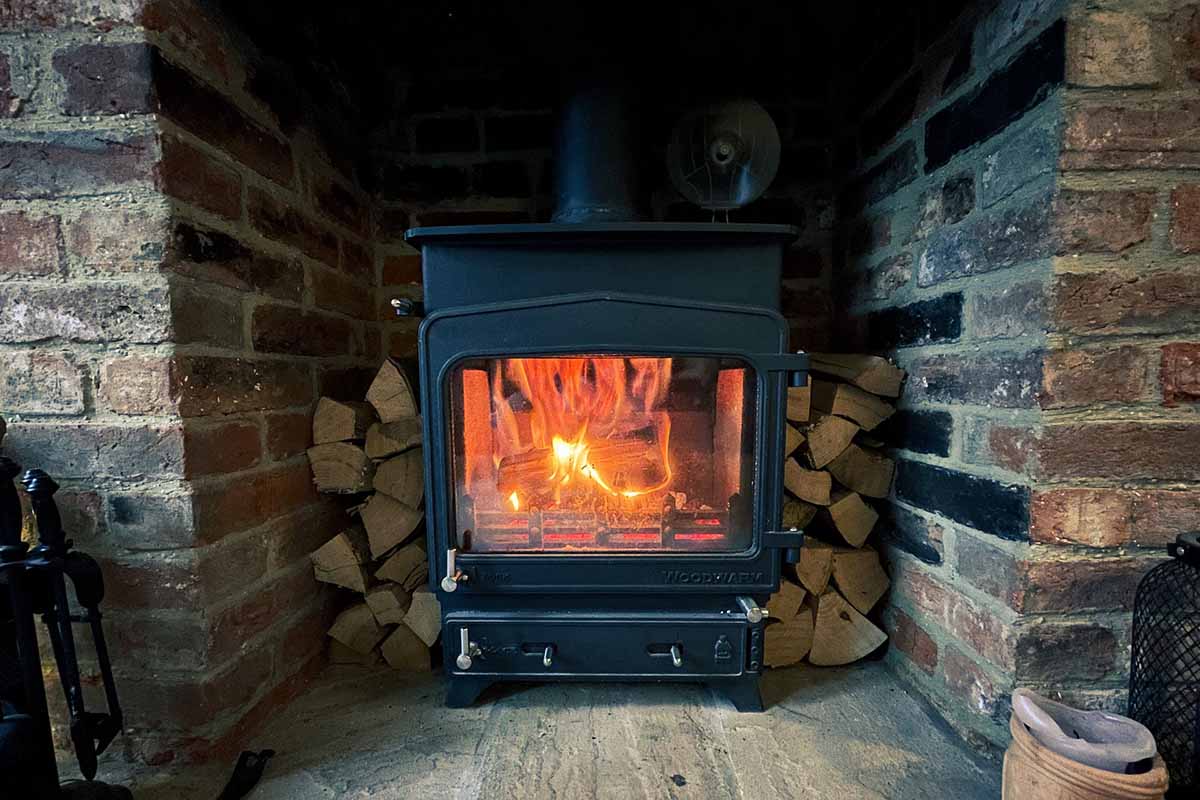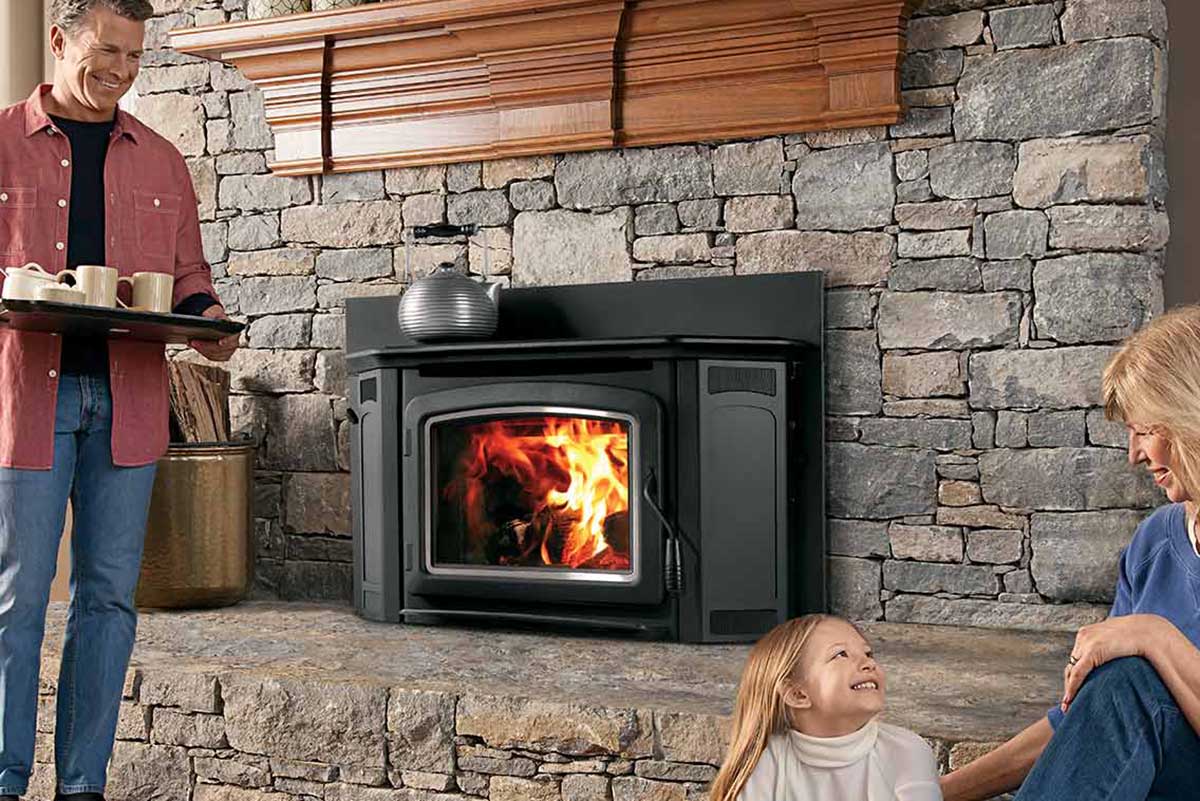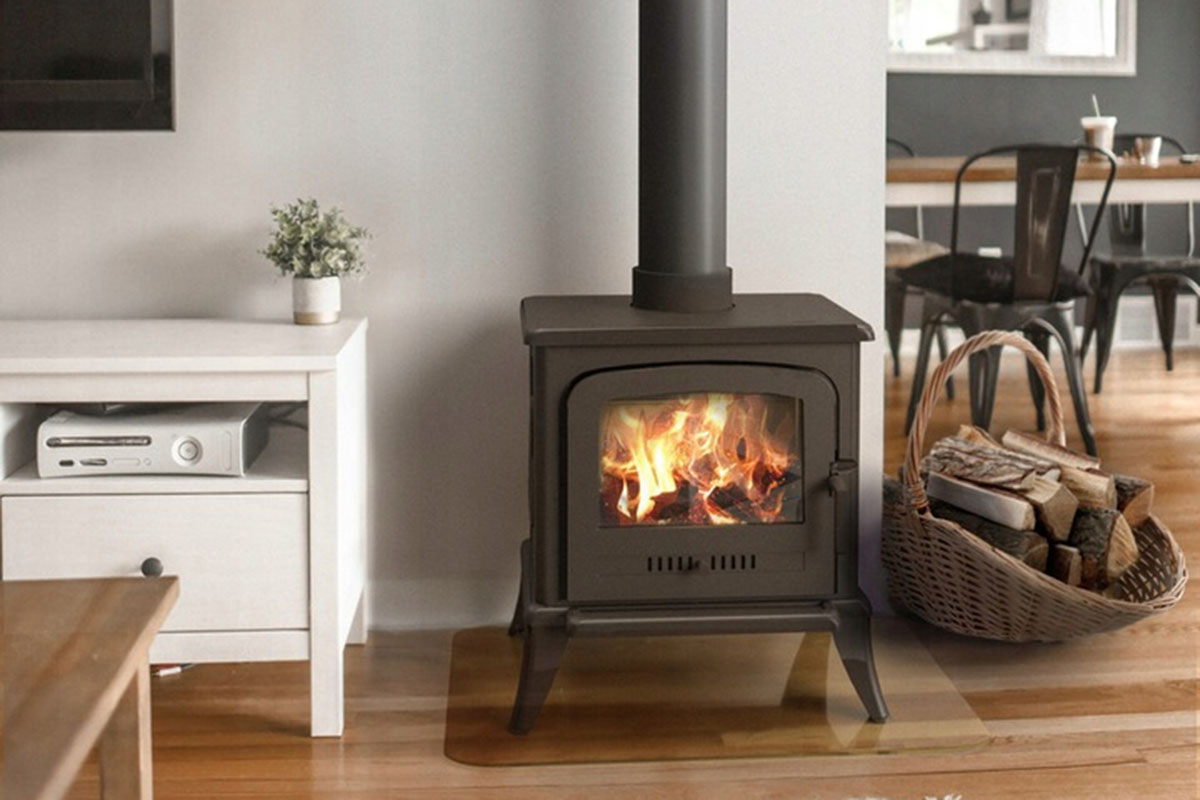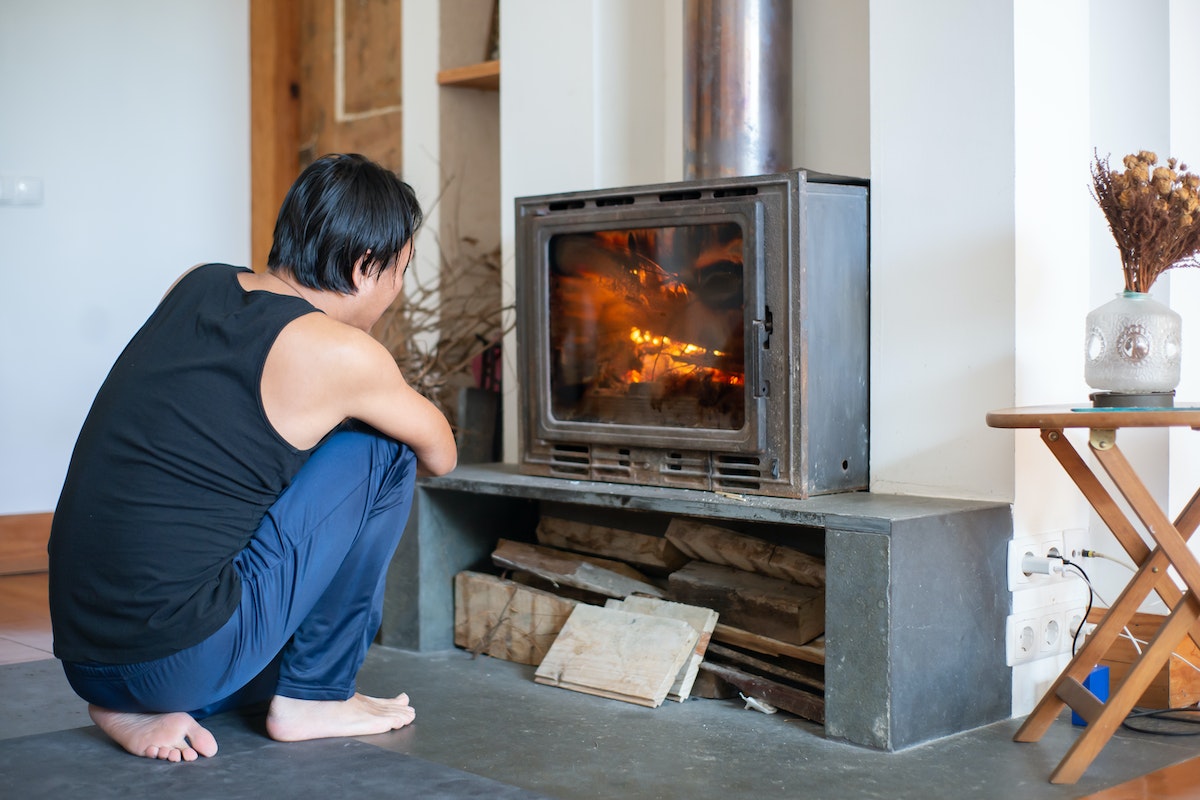Wood stoves have been used for centuries as a reliable source of heat. They provide warmth, comfort, and a rustic ambiance to any home. But have you ever wondered how a wood stove actually works?
In this article, we will delve into the inner workings of a wood stove and explore its benefits, efficiency, environmental impact, installation, and more.
How A Wood-Burning Stove Works
A wood-burning stove operates on the principle of combustion, which is the process of burning wood to release heat energy.
The stove’s design facilitates controlled airflow, ensuring efficient burning and heat production. Its key components include a firebox, a chimney or flue, and air vents.
When wood is burned inside the firebox, it undergoes a chemical reaction that releases heat, carbon dioxide, water vapor, and other byproducts.
The chimney or flue removes the smoke and gases from the combustion process, while air vents allow for the regulation of airflow to maintain optimal burning conditions.
By understanding the process of wood burning fireplace, combustion and airflow control, you can gain insights into how a well open fireplace or wood burning stove work effectively generates warmth.
Exploring the Benefits of Wood Stoves

Wood stoves offer numerous benefits beyond their heat-producing capabilities. One of the primary advantages is their cost-effectiveness.
Wood is often readily available and can be a cheaper fuel source compared to fossil fuels or electricity. Additionally, the wood burning stove provides a sense of self-sufficiency, as you can gather or purchase firewood and rely on it as a renewable heat source. Wood stoves also offer versatility, as they can be used for cooking and provide a backup heat source during power outages.
These benefits make wood stoves an appealing choice for many homeowners seeking both practicality and a cozy atmosphere in their homes.
Burning Wood More Efficiently
To achieve optimal efficiency with a wood stove, certain practices should be followed. One crucial aspect is wood selection. Dry and seasoned wood burns more efficiently, producing more heat and less smoke.
Properly seasoned wood has lower moisture content, which allows for cleaner and more complete combustion. It’s also essential to control the burn rate by adjusting the airflow.
By providing enough oxygen for the fire, you can achieve a controlled and efficient burn, maximizing heat output and reducing waste.
Properly starting and maintaining a fire in the wood burning stove is also important for efficient and effective wood burning.
Types of Wood-Burning Stoves

When it comes to wood-burning stoves, there is a wide range of types and designs available on the market. Understanding the differences between these types can help you make an informed decision when selecting a stove that suits your heating needs and preferences.
Let’s explore some of the most common types of wood-burning stoves:
Traditional Cast Iron Stoves
Traditional cast iron stoves have a timeless appeal and are known for their durability and heat retention properties.
Cast iron is an excellent material for wood stoves because it retains and radiates heat even after the fire has died down. These stoves often feature elegant and intricate designs that add a touch of classic charm to any room.
Due to their robust construction, cast iron stoves can withstand high temperatures and provide long-lasting performance.
Steel Stoves
Steel stoves have gained popularity in recent years due to their sleek and modern wood stove designs. They are typically constructed from high-quality steel, which offers excellent heat conductivity. Steel wood burning stove tend to heat up more quickly than cast iron stoves and distribute heat more evenly throughout the room.
They are often equipped with features such as airwash systems, which help keep the glass clean, allowing for an unobstructed view of the fire. Steel stoves are also generally lighter in weight, making them easier to install and move if needed.
Soapstone Stoves
These Soapstone stoves are known for their exceptional heat retention properties. Soapstone is a natural material that can absorb and store a significant amount of heat.
This means that even after the fire has gone out, the soapstone stove continues to radiate heat, providing a prolonged and comfortable warmth.
Soapstone stoves are often appreciated for their unique and elegant appearance, as the stone’s natural veining and color variations add a touch of natural beauty to the room.
Masonry Stoves
Masonry stoves, also known as “Russian” or “Swedish” stoves, are built with bricks, tiles, or other masonry materials. These stoves are renowned for their exceptional heat retention and high thermal efficiency.
A masonry wood-burning stove is typically designed with channels and baffles that allow the hot gases from the fire to circulate and absorb heat before exiting through the chimney. This extended heat exchange process ensures maximum heat output and efficiency.
Pellet Stoves
Although technically not wood-burning stoves, pellet stoves are worth mentioning due to their popularity and eco-friendly nature. Pellet stoves use small wood pellets as fuel, which are made from compressed sawdust or other biomass materials.
These stoves are equipped with automated systems that feed the pellets into the combustion chamber, regulating the burn wood rate for optimal efficiency.
Pellet stoves offer convenience and automation, as they often feature programmable thermostats and remote controls. They produce minimal smoke and ash, making them a cleaner option compared to traditional wood-burning stoves.
Each type of wood-burning stove has its own unique advantages and considerations. Factors such as design aesthetics, heat retention capabilities, efficiency, and maintenance requirements should be taken into account when choosing the right stove for your home.
It’s recommended to consult with a professional or visit a reputable dealer to explore various options and find a wood-burning stove that aligns with your heating needs and personal style.
Catalytic Wood Stoves
Catalytic wood burning stove incorporate a catalyst into combustion, further enhancing efficiency and reducing emissions.
The catalyst, typically made of precious metals, helps initiate and promote the chemical reactions during combustion. It facilitates the conversion of harmful byproducts, such as carbon monoxide and volatile organic compounds, into less harmful substances.
Catalytic stoves can achieve higher levels of combustion efficiency, resulting in increased heat output and reduced environmental impact. However, they require regular maintenance, including cleaning and periodic replacement of the catalyst.
How Does a Wood-Burning Stove Heat a House?

Understanding how a wood burning stove distributes heat throughout a house is crucial for effective heating. Wood stoves primarily generate heat through two mechanisms: radiant heat and convection.
Radiant heat is produced by the hot surfaces of the wood stove, directly warming objects and people in the room. It provides immediate and localized heat, creating a cozy environment.
Convection heat, on the other hand, is created as air circulates around the wood stove and absorbs heat. This heated air then rises and spreads throughout the room, warming the surrounding space.
By the heat pumps, strategically placing the stove and utilizing fans or heat transfer systems, you can optimize heat circulation and ensure efficient heating of your home.
Radiating The Heat
Wood stoves are designed to radiate heat, providing immediate warmth to objects and people in the room. The stove’s hot surfaces, such as the top and sides, emit radiant heat in all directions.
This heat warms the surrounding space, creating a cozy atmosphere. Additionally, convection currents are created as the stove heats the air, causing warm air to rise and circulate throughout the room.
Proper stove placement, the use of heat shields, and accessories like fans can enhance the stove’s radiant heat distribution, ensuring efficient and effective heating.
Are wood-burning stoves environmentally friendly?
Wood-burning stoves are considered a more sustainable option compared to burning fossil fuels. While burning wood releases carbon dioxide, wood is a renewable resource that can be part of a carbon-neutral cycle when responsibly harvested.
Sustainable wood sourcing, such as using locally harvested or certified firewood, helps minimize environmental impact.
Advancements in technology, electrical components like secondary combustion systems and particulate filters, have further reduced emissions from wood stoves. Proper maintenance and adherence to local regulations can help mitigate any negative environmental effects.
Is burning wood bad for the environment?
The environmental impact of wood-burning stoves is a topic of concern. While burning wood releases carbon dioxide, a greenhouse gas, it is considered a more sustainable option when compared to burning fossil fuels.
Wood is a renewable resource, and if harvested responsibly, it can be part of a carbon-neutral cycle. Sustainable wood sourcing, such as using locally harvested or certified firewood, helps minimize environmental impact.
Additionally, advancements in technology have led to the development of emissions reduction technologies, such as secondary combustion systems and particulate filters, which further decrease the emissions from wood stoves.
Proper maintenance and adhering to local regulations regarding wood-burning practices can help mitigate any negative environmental effects.
Wood Stove Installation
Proper installation is essential for the safe and efficient operation of a wood stove. It’s important to consider factors such as the location of the wood burning stoves work, clearance requirements from combustible materials, and suitable venting options.
Following local building codes and regulations is crucial to ensure compliance and safety. Professional installation is highly recommended, as it ensures that the wood burning stove works correctly installed, the chimney or flue is properly connected, and the necessary clearances are maintained.
Safety tips, such as using heat shields and installing carbon monoxide detectors, should also be followed to promote a secure wood stove setup in your home.
How much wood does a wood burner use?
The amount of wood consumed by a wood stove can vary depending on several factors. Stove size, burn wood rate, insulation of the space, and climate conditions all influence wood consumption.
Larger stoves generally require more wood to maintain desired heat produced levels. The burn wood rate, determined by airflow control, also affects wood consumption. A slow burn with controlled airflow will use less wood compared to a fast burn.
Properly insulating your home and minimizing heat loss can also help reduce wood consumption. Climate conditions like colder temperatures may necessitate more frequent wood refills.
By understanding these factors and monitoring your wood consumption, you can efficiently estimate and manage your wood supply.
Conclusion
Wood stoves are a reliable and efficient heat source, providing warmth, cost-effectiveness, and a rustic charm to homes. By understanding how wood burning stove work and implementing best practices, you can fully enjoy the benefits they offer.






